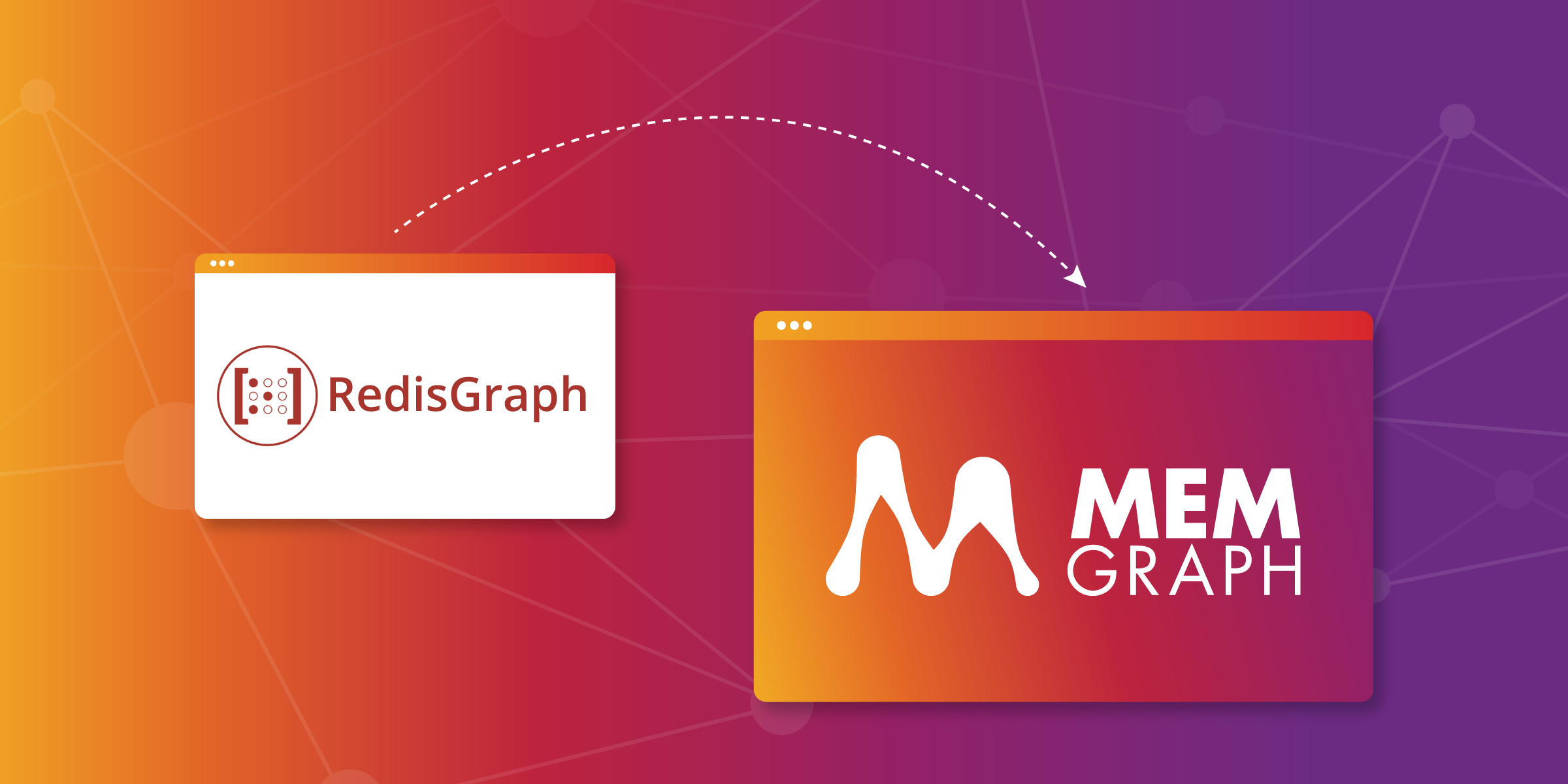
RedisGraph Alternative: What are my Options when RedisGraph is Dead?
With the recent announcement of RedisGraph's sunset, the search for a robust and performant graph database alternative is more relevant than ever. Choosing a solid alternative now can save you a fair amount of time and resources and give you a safety net once RedisGraph is gone. This article is to help you explore Memgraph, a rising star in the graph database landscape, and uncover its key features, strengths, and why it stands out as a compelling choice for graph-based applications.
How much time do I have before RedisGraph goes off?
For any organization and product, the end-of-life phase is a structured process that involves two significant steps: end of sale and end of support.
Here are a few important dates to keep in mind if you’re a RedisGraph user:
- Annual subscriptions can be renewed until January 1, 2024.
- Existing RedisGraph customers have the option to renew their subscriptions with an expiration date no later than January 31, 2025.
- The scheduled date for the end of support is January 31, 2025.
Following January 31, 2025, RedisGraph commands will be disabled on Redis Enterprise Cloud. For more information, don’t hesitate to visit the RedisGraph end-of-life announcement.
Memgraph: What makes it a powerful alternative?
RedisGraph has been widely adopted for its simplicity and integration with the popular Redis ecosystem. However, as development and support for RedisGraph come to an end, organizations seeking a long-term, scalable graph database are turning to Memgraph, and for a good reason. Memgraph, an open-source graph database designed to efficiently handle complex interconnected data, boasts several standout features that position it as a strong alternative.
In-memory graph database
Both RedisGraph and Memgraph are in-memory graph databases, meaning they store and process graph data primarily in memory rather than on disk. This approach offers significant performance advantages: By keeping the graph data in memory, Memgraph can provide efficient and low-latency query responses, making it well-suited for applications that require real-time or near real-time graph processing.
Native graph processing
Both RedisGraph and Memgraph employ a native graph processing approach. Unlike traditional relational databases that rely on complex join operations for querying relationships, RedisGraph and Memgraph are purpose-built to handle graph data efficiently. Memgraph's native graph storage and processing capabilities deliver unparalleled performance, enabling lightning-fast traversals and queries on large-scale datasets. Its query engine is specifically optimized for graph processing, allowing for complex graph traversals and pattern matching with minimal latency.
Open-source nature
Both graph databases share an open-source heritage. RedisGraph is a module built on top of Redis, allowing users to benefit from the advantages of open-source development, transparency, and community contributions. Memgraph, while offering a commercial edition, also provides a fully functional open-source edition, enabling users to explore and utilize its graph database capabilities.
Cypher compatibility
RedisGraph utilizes a subset of the popular Cypher query language, which is closely linked to Neo4j, to interact with and manipulate graph data. On the other hand, Memgraph is compatible with Bolt protocol and supports the Cypher query language, providing a seamless experience for users to explore, compare, and switch between the two graph databases effortlessly.
Compatibility with existing ecosystems
While RedisGraph integrates seamlessly with the Redis ecosystem, including libraries, clients, and community support available for popular programming languages, Memgraph, as a mature and robust database, offers compatibility with various programming languages and ecosystems. While a standalone graph database, Memgraph, provides native libraries, drivers, and connectors for languages such as Python, Java, JavaScript, and Go, leveraging the capabilities of a wide range of programming languages.
Memgraph's commitment to developer experience is evident in its comprehensive documentation, tutorials, and community support. With active community forums and a responsive support team, users can easily rely on Memgraph's assistance throughout their graph database journey.
Key takeaways
As RedisGraph's support winds down, organizations must consider the long-term viability and performance of their graph database infrastructure. Memgraph's impressive features, scalability, and developer-friendly approach position it as a compelling alternative. Its native graph processing capabilities, seamless integration options, extensive community support, and much more make it a worthy contender for those seeking a powerful, future-proof graph database solution.